When hurricane Milton made landfall in Florida on October 9, it brought widespread devastation to homes, infrastructure and communities across the state. Thousands of residents were forced to evacuate as winds reached up to 190 kilometres per hour, leaving many without power, food, water and essential resources. As recovery efforts began, Salvation Army emergency response teams swiftly mobilized to provide aid.
Over the course of a two-week deployment, volunteers and employees from the Canada and Bermuda Territory worked around the clock to give practical assistance and emotional and spiritual care to people in Florida, North Carolina and Georgia. During their two-week deployment, across all locations, The Salvation Army helped distribute more than 161,000 meals, 20,500 hygiene kits, 35,700 meals ready to eat (MREs) and countless prayers.
SARASOTA, FLORIDA
Tim Sharp, executive director of The Salvation Army’s community resource centre in Edmonton, was deployed to support the emergency disaster services (EDS) efforts in Sarasota, Florida, one of the hardest hit areas. Having served with Army disaster relief efforts since the 1990s, including 9/11 and hurricane Katrina, Sharp was prepared to act on short notice.
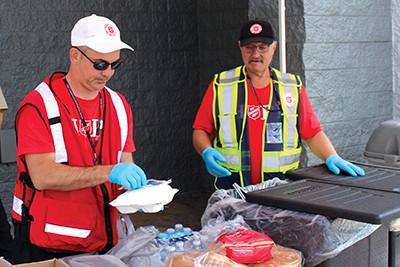
“The immediate need was food and water,” says Sharp. “By the time we arrived, people had been without power for three days.”
Sharp and his team worked closely with local Salvation Army members and partners from the Southern Baptist Church, who helped prepare meals. “The collaboration was amazing. There were up to 10 canteens operating each day, including ours, and we were in constant communication with other teams,” he says. Volunteers from Canada stayed at the Salvation Army corps in Sarasota and each morning they drove to the Southern Baptist church, loaded up the mobile unit with supplies, and then dispersed to locations throughout the city to serve.
While food was the initial priority, the needs of the community began to shift as time passed, and residents leaned on the Army for emotional and spiritual support. “It’s not just about food—anybody can provide food. It’s why we serve that makes us different,” says Sharp. “We’re putting our faith into action in a time of need, and that was the mindset of the entire team I served with.”
For Sharp, putting faith into action is a personal commitment—one inspired by his father, Major Herbert Sharp, who served as an emotional and spiritual care specialist for EDS. On the two-year anniversary of his father’s passing, Sharp was on the front lines in Sarasota responding to Milton.
“I grew up watching my dad serve in EDS, but we never really had the opportunity to serve together,” explains Sharp. “It was a blessing to continue his legacy.”
LAKELAND, FLORIDA
In Lakeland, Florida, Paul and Elizabeth Gilbert, volunteers from St. Thomas, Ont., were also on the front lines in the days following Milton. The Gilberts, who have been volunteering with EDS in St. Thomas for more than two years, were on vacation in Newfoundland and Labrador when they got the call, and two days later, they were in Florida.
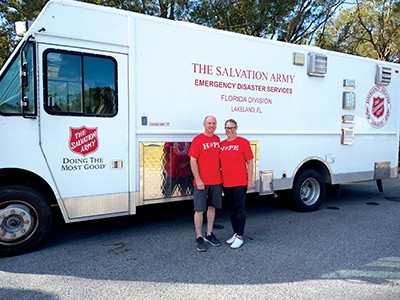
Lakeland, about an hour east of Tampa, was hit hard by both Milton and hurricane Helene only two weeks prior. The damage was widespread, and the Gilberts arrived to uprooted trees and some areas still flooded. “It was dangerous to be out in the canteens after dark because you couldn’t see if there was debris in your way or trees fallen on power lines,” explains Elizabeth.
One local trailer park was still flooded up to their front doors, and people used wooden pallets as bridges to get into their homes. “One thing we would never even think of here in Canada is the alligators,” says Elizabeth. “Where there is a body of water in Florida, there are alligators.”
“We drove through neighbourhoods where everybody’s belongings—their beds, sofas, clothes, everything—were out on the side of the road,” says Paul. “Some of these people didn’t have a lot to begin with, and now they’d lost everything.”
According to the Gilberts, relief efforts were the result of many hands coming together. The Salvation Army distributed food and clean-up kits that included 19-litre buckets, hygiene items, paper towels and other supplies to help residents start the recovery process. The Army team worked alongside local volunteers, including Southern Baptist disaster relief teams, who provided large-scale mobile kitchens to cook the meals, and the Florida State Guard, who distributed MREs and tarps.
“One day, we were serving hot meals to a lineup of cars so long you couldn’t see the end of it,” says Elizabeth. “There were only two of us in the truck and we were swamped. One of the Florida State Guards came to us and said, ‘What can we do to help?’ and they grabbed a pair of gloves and jumped in to serve. That was a great attitude.”
CLEARWATER, FLORIDA
Meanwhile, in the Tampa Bay area, Debbie Clarke, EDS specialist for Manitoba and Northwestern Ontario, was stationed in Clearwater to help provide canteen services. Surrounding communities were devastated by flooding, fallen trees and power outages, and residents were tasked with cleaning up their damaged properties, finding temporary housing and enduring long wait times for support services.
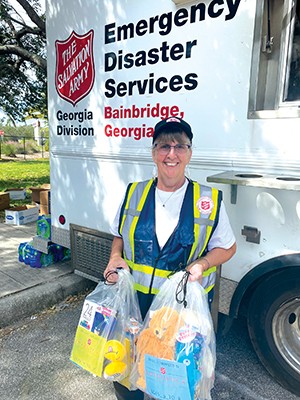
Clarke was part of a team of 30 people, including three Canadians, that served approximately 350 meals at lunch and supper each day, and in some locations, that number climbed to 425.
“I spent a lot of time talking to people and just listening to their stories,” says Clarke, who recalls one elderly woman who was grateful to be approved for housing after days of uncertainty and sleeping in her car. “Still, she had no place to stay because there were no hotel vacancies. It made me think about my own mother, who is around the same age.”
Another man shared how he had to call for help for his elderly neighbour, who had recently moved to the area and did not have family or friends to look out for her. She had been isolated during the storm and did not know what to do in the aftermath. After posting on his community Facebook group, more than 50 neighbours showed up to help her, cleaning up her damaged property and removing wet belongings from the basement.
For Clarke, these personal interactions were just as important as providing physical aid. “We were able to give people a safe space to share their feelings, ask for prayer, and sometimes, all they needed was someone to listen,” she says.
Many people were surprised to see that Salvationists from Canada had travelled south to help with recovery efforts. According to Clarke, one woman thanked her and said, “This is why I donate to The Salvation Army.”
“People just want someone to listen, they want to see that others care, and they want to tell their stories. And we have to make time for that,” says Clarke. “When I’m on the truck, I say to people, ‘Don’t rush. It’s not about how many we serve; it’s about how many we’ve reached.’ ”
ASHEVILLE, NORTH CAROLINA
Don Armstrong was among a group of five Canadians serving in western North Carolina. “When I was called to go down there, I said, ‘Absolutely.’ I never turn down an opportunity to go out and serve,” says Armstrong, a Salvationist and food bank services co-ordinator at Chilliwack Community Church, B.C. He has been volunteering with EDS for 40 years.
The Salvation Army operated approximately 10 food trucks in the area, distributing food and other vital supplies. Armstrong recalls the long lines of people waiting for food and the heartwrenching stories they shared.
“Many of the people had lost everything—homes, belongings, even family members,” he says. “Some were still looking for loved ones. We sat with them, prayed with them, and just listened to their stories. I’ve been part of a lot of emergency responses, but in this one, there were so many people who had lost everything.”
According to Armstrong, his team in North Carolina prayed with more than 6,000 people during the relief efforts and approximately 600 people were reported to have accepted Christ as a result.




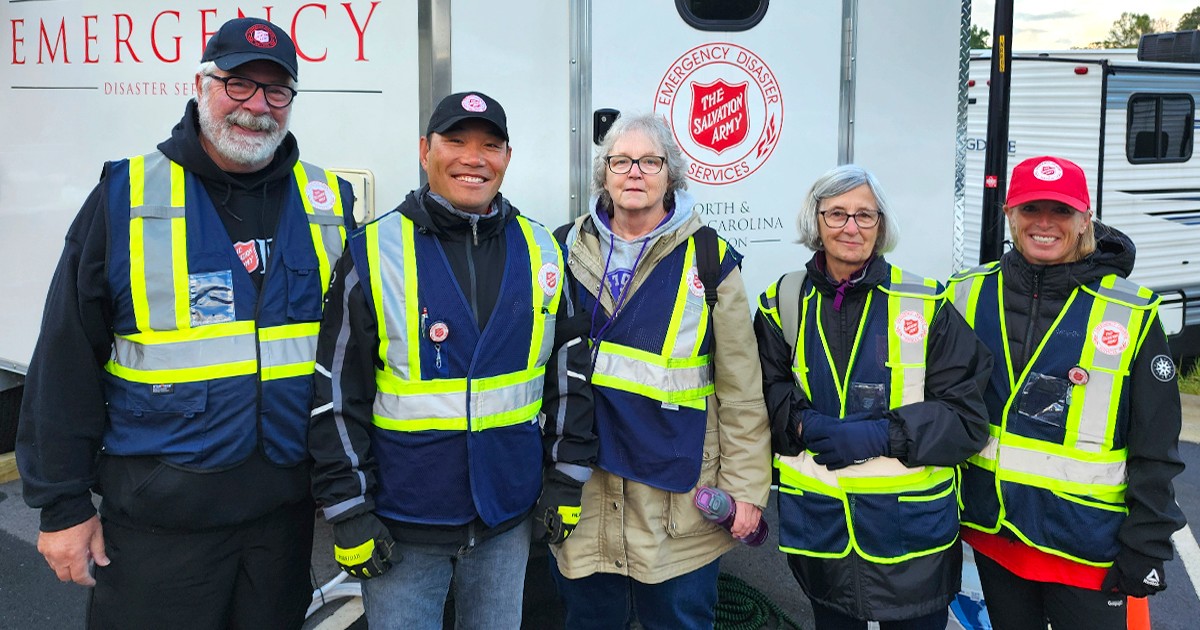
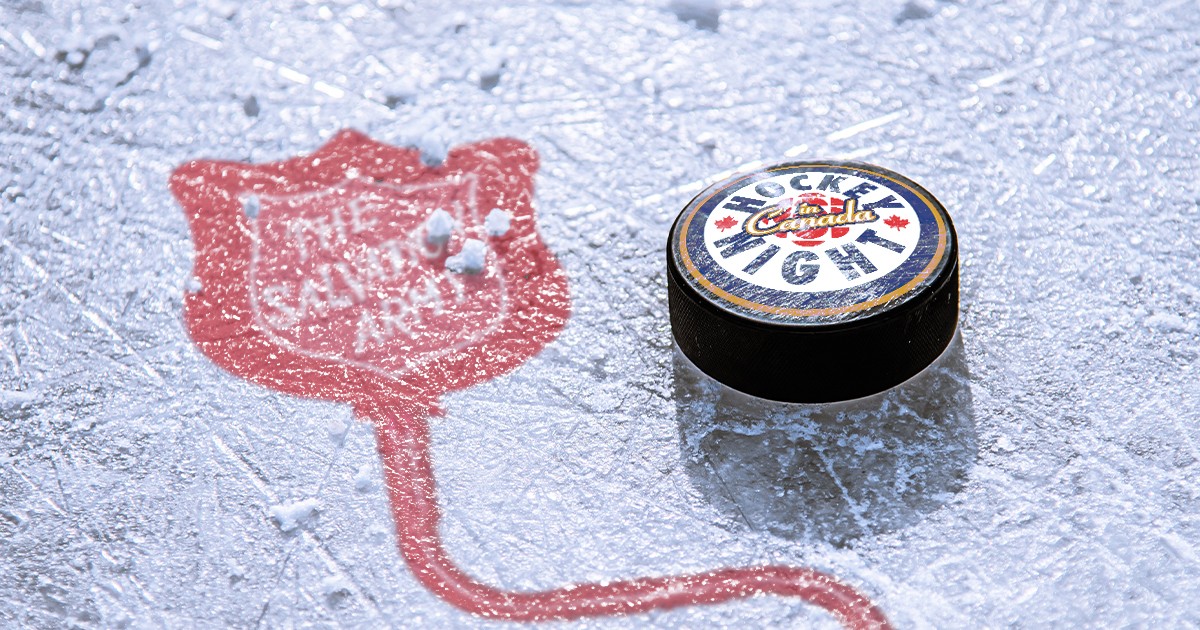

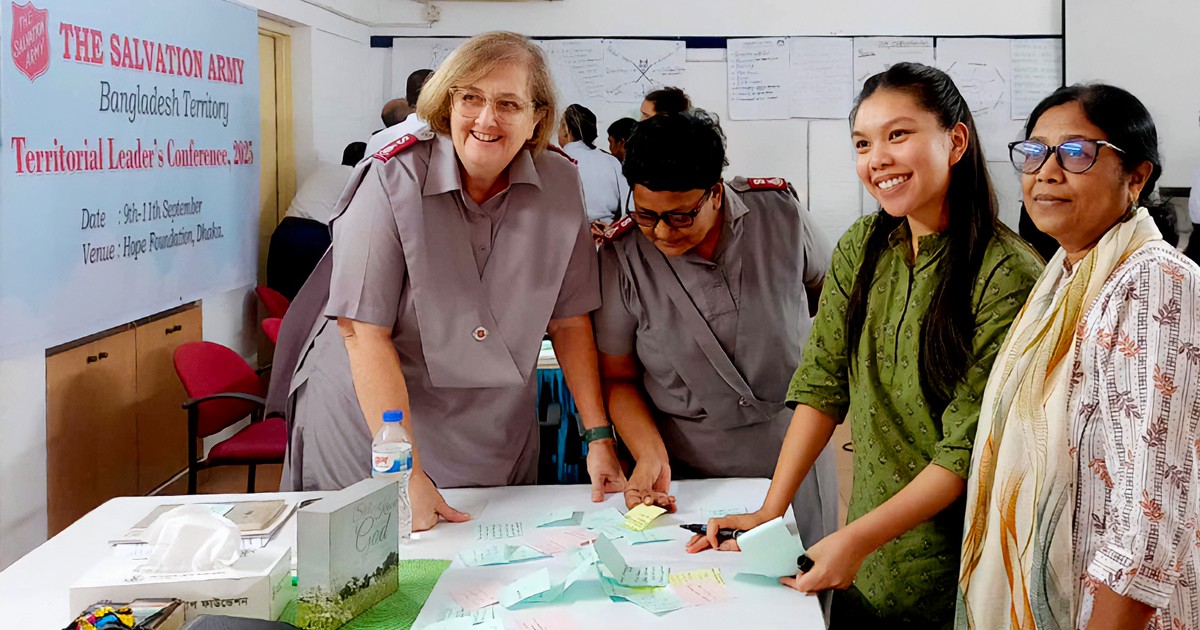


Leave a Comment